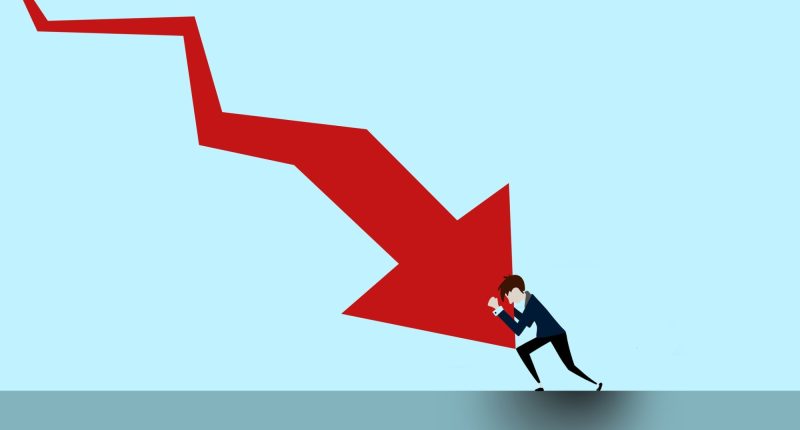
Opinions expressed by Entrepreneur contributors are their own.
How do I build a business that withstands the test of time? One that endures economic downturns, surges in innovation and workplace trends like the Great Resignation and September Surge? As leaders and founders, it’s a question that we spend hours strategizing and brainstorming around.
I view it much like playing a video game, but not the kind where you drop a quarter in the arcade and win a quick prize. It’s more like the video games that have you glued to your chair, fist-pumping, with a combination of stress and satisfaction when you finally unlock the next level — and then another and another. Unlocking these levels — which are essentially the building blocks of a durable business – is a marathon, not a sprint. We need to plan appropriately, invest in the right areas, leverage market data to inform our decisions and learn from those who have already succeeded. What worked and what didn’t? Through my own journey of building a durable business, I’ve identified several patterns that can help other businesses withstand not only the test of time but also uncertain times.
Related: Economic Downturns Don’t Last Forever — Here Are 5 Ways to Maintain Resilience During a Recession
Building for durability isn’t for the faint of heart
In reality, building for durability requires a commitment to decades of work. I call these the hard yards — and it always gets more difficult as you scale. At each stage, as you multiply your business in terms of revenue, people, and reach to market, there are new challenges to unlock, much like gaming levels. The experience will test your skills and not only demand an up-leveling of your commitment but will also require you to recommit with the passage of each year because it will be that challenging.
Be disciplined and data-driven with growth decisions
The types of challenges you will encounter will differ from business to business. For founders leading through the current economic downturn, many are facing the daunting question, “Can I still invest in the business?” The answer is yes. We just have to be very specific about how and where to invest. Take, for example, one study that followed 4,700 companies over the course of three recessionary periods and found that those that performed the strongest invested in tactics such as R&D, marketing and necessary business assets.
Instead of taking their foot off the pedal, they buckled down and invested in areas that made sense for them. Today, leaders need to apply an added level of discipline around where to focus inside the business and how to approach their growth decisions. Rather than take on additional risk by investing in large long-term bets that may not work out, it’s better to double down on or reinvest in things that have proven successful based on experience. It sounds counterintuitive, but boosting spending can result in long-term success. A report from Analytic Partners noted that 60% of companies that increased their media spend during the last recession saw greater ROI compared with those that didn’t.
To guide decision-making in uncertain times, my advice is to lean in. Study market and economic updates as a critical data set. One-third of my reading material these days is economic reports from advisors, geopolitical sources, economists, bankers and investor groups. The great news is that many of these materials are available to you for free, and when you and your executive team make it a shared responsibility to dig into the macroeconomics, you’ll have valuable data inputs to guide decision-making around what moves to make or what to change.
A word of caution here, though: It’s critical that you don’t rely solely on data, or you may risk losing sight of the human element of leadership and decision-making. By merely focusing on the performance metrics and ignoring this vital human feedback, you could risk losing customer trust and satisfaction, which could ultimately impact your bottom line. Therefore, it’s essential to balance data-driven insights with an empathetic, human-centered approach.
Don’t copy, but learn from predecessors
Economic highs and lows are cyclical. When you take the time to build a durable model with intention and long-lead planning, there’s likely someone who’s a decade ahead of you who has seen and ridden similar waves. The goal is to study their moves. You may not build a replicate of Microsoft, Google or Atlassian because you don’t have their specific viewpoints or ability to repeat their success verbatim, but their experience provides an incredible opportunity to learn from their successes and failures, patterns and anti-patterns while discovering the things you’d like to emulate. As a tip, I recommend getting in touch with your peer groups at these companies to speak with them directly, ask questions and study their journey with firsthand information.
5 patterns of successful long-standing businesses
While your long game is unique to you and your business, there are five common patterns that successful multi-generational businesses follow:
1. Building community
Successful businesses that have been around for a long time, that have reinvented themselves and grown along the way, have built a community economy around themselves. These are philanthropic giving communities, user group communities and company communities. Microsoft, Atlassian, Salesforce -— these are all companies that have successfully built a community economy, and it has paid off for them in the long term. What they all have in common is that they are using the community to win the hearts and minds of people to wrap their business model around.
2. Giving back
The new DNA of a durable business is one that does good and in doing good, drives profit. In fact, a study from Harvard Business Review found that nearly 60% of businesses that had a strong and clear purpose that laddered back to supporting the broader community experienced 10% or more growth during a three-year period. But keep in mind this isn’t just about having a Corporate Social Responsibility (CSR) program and charter. Successful businesses go out and act with impact. They build this into their business model and start giving back from day one; donating their profits, product, equity and employee time. They do it for a long period of time, not seasonally or to make a statement. Companies can and should orient around giving back as a key factor in positioning for long-term success.
3. Establishing a partnership economy
Durable businesses look to find as many companies — small, medium and large — that will consider their business as a long-term viable partner. These partners can grow around, within and from you. Partners can take you deep into other verticals, help expand your Total Addressable Market (TAM), and even translate your documentation into local languages, making your offerings more accessible. This may mean reselling your goods and services, integrating their offerings with yours and/or building practice areas around you with education, installation and configuration, workshops and more.
Leaders should always ask, “How well does this partner fit our culture?” and “What value does this partner bring to the organization?” Listen for answers that address how the partnership will support your long-term vision. You want to be sure that you can see yourself working and growing with them for the next 5-10 years. Misalignment, if overlooked, can be an expensive misstep in your journey towards growth.
Related: 4 Ways To Sustain A Recession-Proof Business
4. Building a jobs economy
Successful long-standing businesses, like Microsoft, Atlassian, Oracle and Salesforce, have built a jobs economy around their products by offering product certifications to end users. For users, being certified in Atlassian means that your odds increase of getting another job that uses the Atlassian product stack. The skill becomes an advantage for career paths, and the likelihood increases that a new job for a past user will translate to a repeat sale of your products.
5. Growing a marketplace economy
Today, app marketplaces are a thriving ecosystem of software solutions. More than half of the top 100 SaaS platforms have them. Marketplaces have become the cornerstone of success for both SaaS platforms and their marketplace vendors. The marketplace enables SaaS platforms to extend their R&D capabilities through marketplace vendors who offer innovative extensions that help customers do more with the platform. App providers are able to compete with each other to deliver solutions to enhance the platform’s capabilities for the wide variety of knowledge workers using the platform.
It’s important to acknowledge these patterns of success at a time when not a single business today can say that they are completely insulated from current macro and micro economic conditions. Getting back to the gameplay theme, durability is the power-up that helps long-standing businesses advance to the next level. Microsoft, for example, has seen three down economic cycles over three decades in its history. Atlassian has seen two. They all leverage extra capacity and output through the economies mentioned above to help them pull through, innovate and reinvent.
At a minimum, leaders must study economic data (and history), hone their sights and suppress selfish decision-making that trades short-term results for long-term business longevity. Yes, time and vision are your allies, but stay nimble. Just like your gameplay character, sometimes your next move will surprise you.
This article is from Entrepreneur.com









